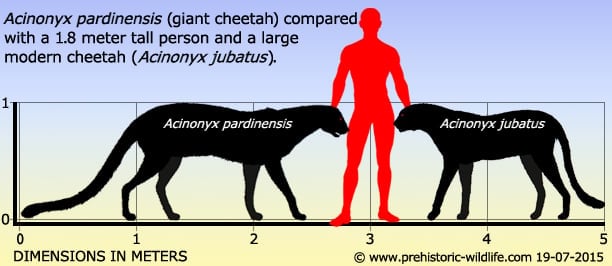In Depth
Further Reading
- Acinonyx pardinensis (Carnivora, Felidae) from the Early Pleistocene of Pantalla (Italy): predatory behavior and ecological role of the giant Plio-Pleistocene cheetah. - Quarternary Science Reviews 87 82-97 - Marco Cherin, Dawid Adam Iurino, Raffaele Sardella & Lorenzo Rool - 2014.









